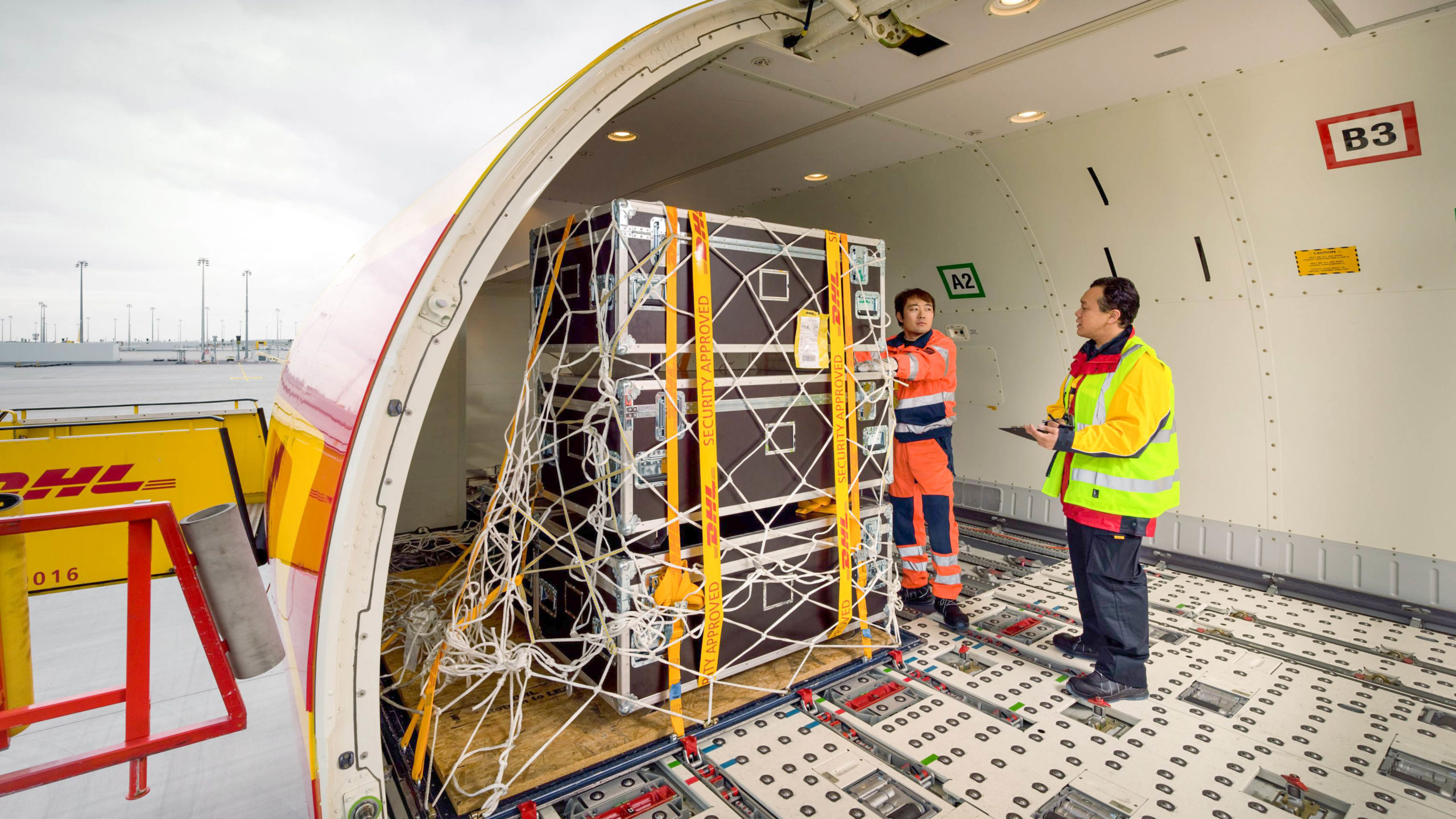
The number of satellites, space probes and stations orbiting the earth is growing steadily – and with it the demand for logistics services that provide transport and supply for the facilities on the earth’s surface and in orbit. Is space logistics the logistics market of the future or will its significance remain modest despite the growth? We will try to make a prediction.
Space Logistics: No Far-off Utopia …
Sputnik 1, the first satellite in earth orbit, lonely circled our planet in 1957, followed less than 15 years later by the first manned space station. In between, there was also the flight to the moon to marvel at. From the very beginning, material had to be transported for this purpose, over land and into orbit. However, in the times of the Cold War, the first projects were few and top secret. The next decade of the 20th century witnessed a steady increase in the number of communications satellites, weather satellites, and earth observation satellites, all of which were launched into space by North American or European countries.
Since the 1970s, when the list of space-faring nations began to expand across all continents including emerging economies, the number of active satellites in orbit has been growing: from three-digit numbers in the 1960s to more than 5,000 in 2022.
Meanwhile, what was once a top-secret domain has become an everyday technical business in which, in contrast to the early days of space travel, numerous private companies and logistics service providers are involved. Even the logistical supply of the International Space Station ISS with material and people in space is now the responsibility of the private provider SpaceX.
… But Still a Niche Market
Nevertheless, the entire space industry is still a niche logistics market. And apart from passenger flights to manned space stations, for example, for which the highest level of space expertise is indispensable, adapting to the logistical needs of space travel on the earth’s surface requires only minor adjustments. After all, highly sensitive technical equipment or materials have always been part of day-to-day logistics business.
But the economic relevance could change in the future with the development of the space industry into a larger market. This is supported by the constantly increasing number of space-faring nations and the definition of new goals and projects by established space-faring countries.
There are expected to be tens of thousands of satellites in orbit in the near future, especially low- and medium-earth-orbit (LEO and MEO) devices. These satellites will require logistics services for reaching their target coordinates in space. As the market grows, demand for end-to-end logistics solutions from the point of production all the way to orbit is expected to increase.

What Is Part of Space Logistics?
The task of space logistics is to bring space systems into orbit, keep them functional, and support their operation. To this end, space logistics is responsible for the flow of materials and all relevant requirements throughout the life cycle of a space system.
This includes, for example:
- Transporting people and cargo from earth to space
- Propellant and fuel supply, for example replenishment for space station propulsion units
- Removal of waste and space debris
- Adjustment of the orbits of satellites or stations
- Maintenance and repair
- Terrestrial logistics such as storage, transportation, distribution, and maintenance of materials or disposal of space materials
As on earth, space logistics is about establishing reliable, in this case astro-logistical, supply chains from earth to extraterrestrial destinations. However, as far as in-orbit services such as maintenance are concerned, there are still more questions than answers in terms of technical feasibility, economic viability, or the regulatory framework.
Requirements of Space Logistics in Orbit
Human activities in space are constantly increasing. Transporting supplies, fuel, equipment, and materials into space is hence a logistical task of the present day. The basic principles of logistics are fundamentally the same on earth and in space: logistics service providers, for example, must consider loading capacities and weight restrictions for both land and space transportation.
But the extreme environmental conditions of transportation beyond the earth’s atmosphere and back, if necessary, transform the secure transport, storage, and supply of materials and products into a logistical challenge. Dimensions, weight, and humidity as well as resistance to pressure, extreme temperatures, and lack of gravity must be given additional consideration.
The current model of the Dragon spaceship by SpaceX can carry up to six tons of payload into space and three tons back. The development of such a powerful and operational spacecraft inevitably consumes large amounts of resources – ranging from manpower to capital and time. Thus, the day-to-day business of space logistics in the near future will rather be in the sector of satellite logistics.
Requirements of Space Logistics on Earth
Not only in manned spaceflight, but also in satellite logistics, there is a lot to do on the ground. With tens of thousands of satellites scheduled for launch in the coming years and many operators struggling to make projects profitable by cutting costs, logistics providers have good options for action. They can allocate rocket cargo capacity to customers, pick up satellites at production sites and carefully transport them to launch pads.
In the long term, end-to-end solutions are likely to shape space logistics – including land transportation, in-orbit transportation, positioning of the satellite, in-orbit services, and disposal. At present and in the short to medium term, the key to success lies in collaboration between land and space logistics specialists.
DHL Is Already a Part of Space Logistics
DHL Global Forwarding and New Space Company D-Orbit have set an example of such cooperation as early as 2020. The Italian company D-Orbit brings satellites to their destination in earth orbit and intends to offer precisely the end-to-end solutions that will define space logistics in the future. This calls for a competent partner well versed in transporting highly sensitive cutting-edge technology while it is still on the ground.
DHL Global Forwarding, the air and sea freight specialist of Deutsche Post DHL Group, is one such partner. For D-Orbit, DHL Global Forwarding has delivered an ION Satellite Carrier from Milan to Cape Canaveral. This is a cargo vehicle for small satellites, able to transport them into orbit and release them into precise orbital slots. Together with the innovation team of DHL Customer Solutions & Innovation (CSI), a customized logistics concept was developed to help the carrier on its journey into space.
After an eleven-hour flight from Milan to Florida with a stopover in Luxembourg and the last mile by road freight, the ION Satellite Carrier arrived in Cape Canaveral – together with a comprehensive set of essential test equipment that ensures the satellite’s integrity and safety before it is launched into space. The cooperation was a resounding success and points the way to the future. It is through projects like this, that DHL and CSI develop industry-specific solutions and put the innovations directly into practice. Deutsche Post DHL Group is ready for the step into space.
Conclusion: How Will Space Be Changing Logistics?
Reusable components, new rocket designs, and alternative launch technologies may reduce launch costs significantly in the future and open up new opportunities for broader space activities. As the number of objects in orbit grows, so does the market for the space industry. With more satellites being launched into space, more satellite constellations being installed, and plans for space hotels and Mars missions being announced, the logistics space industry could develop from what is today a limited niche into a profitable sector.
One thing, however, does not change when moving from earth to space: Despite different distances and gravitational forces, the logistics industry must always perform its task with the same excellence. And this task is to get goods from A to B safely, on time, and with the greatest possible efficiency.
For service providers already active in space logistics or planning to do so, there are great opportunities – but also a great responsibility. Solutions should not only be groundbreaking, but also sustainable, for example when it comes to avoiding growing debris accumulations in earth orbit. The space logistics of the future cannot be one-way logistics.
Frequently Asked Questions
- What is space logistics?
Space logistics ensures the supply of resources to space systems throughout their life cycle. This begins with the transport of a system into orbit and ends with its disposal. - How important is space logistics for the logistics market?
In relation to the total volume of logistics services, space logistics is still a niche market. However, as more and more states and private companies intend to launch objects into space, the market share and importance of space logistics will increase in the near future. - How will space logistics develop?
More and more satellites being put into orbit in the coming years and decades translate into a greater demand for space logistics. The trend of the future could be end-to-end solutions from one single provider, with service providers also taking care of disposal and recycling issues. - How is DHL involved in space logistics?
For example, DHL Global Forwarding is cooperating with the Italian New Space Company D-Orbit to launch carrier platforms for satellites into orbit. DHL is responsible for terrestrial logistics in this project and is developing customized solutions for space logistics together with the DHL Customer Solutions & Innovation team.






